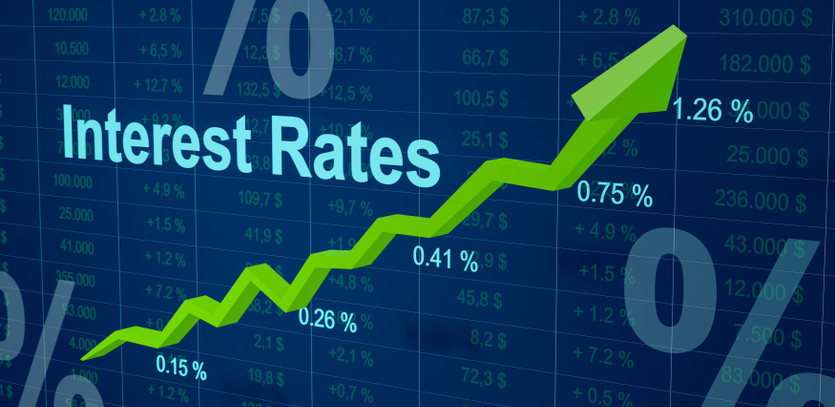Unraveling the Impact of Interest Rates on Investments
It's common knowledge among investors that interest rates play a crucial role in determining their loan costs. High interest rates invariably mean higher borrowing expenses. But did you ever consider the influence rates exert on your investments? Many investors zero in on the low-interest-rate scenario, but a hike in interest rates transforms the business and investment market dynamics. So, how can investors turn a profit in a rising interest rate environment? Let's explore.
Key Strategies to Consider
When designing or revising their investment portfolio, investors should bear in mind the implications of interest rates. Profiting from escalating interest rates can involve strategies such as investing in banking and brokerage entities, tech and healthcare stocks, and companies maintaining sizable cash reserves.
Another strategy is leveraging higher rates to purchase real estate and dispose of surplus assets. Short-term and floating-rate bonds can provide robust investments during periods of increasing rates, mitigating portfolio volatility. Also, consider diversifying your portfolio with inflation-resistant investments and those yielding credit-based returns.
Harnessing the Profit Potential of Banks and Brokerage Firms
Institutions like banks and brokerage firms generate revenue from interest, enabling them to earn more when rates escalate due to tighter credit availability. Consequently, consumers are prone to pay more for borrowing. When the Federal Reserve has previously augmented interest rates, financial service companies, such as banks and brokerages, observed a rise in their interest income and operational profit margins.
On the flip side, lower interest rates result in consumers having more disposable income, often leading to higher spending and borrowing. Even during low-rate periods, banks stay profitable through the various fees, commissions, and service charges they extract from their clients.
Capitalizing on Companies Flush with Cash
Companies with large cash reserves stand to gain from surging rates as they earn more on their reserves. Investors can focus on firms with low debt-to-equity (D/E) ratios or those with substantial portions of their book value as cash. Examples of cash-rich companies include Apple (AAPL), which boasted $63.91 billion for the last quarter of 2021.
Maximizing Low Rates
Leverage cheaper borrowing costs by locking in low-interest rates through variable or adjustable-rate credit. If the rates rise, so will your loan or mortgage rate. However, those with adjustable-rate mortgages (ARMs) or companies using adjustable-rate financing should consider refinancing with fixed-rate financing, thus securing the lowest feasible interest rates for the long haul.
Purchasing with Financing
Whether you are an individual or a business contemplating significant purchases or capital expenditures, consider making these acquisitions now to secure low long-term rates. Purchasing before a substantial hike in interest rates can result in significant savings in financing fees and overall long-term expenses.
Investing in the Tech and Healthcare Sectors
While dividend-paying companies appeal to many investors due to their profit-sharing model, those seeking long-term growth in the context of rising interest rates might need to shift their focus. Tech and healthcare companies usually retain a larger share of profits to reinvest in growth ventures, rather than distributing them as dividends. Historical data suggests that during times of rising interest rates, the tech and healthcare sectors have delivered average gains surpassing the S&P 500 Index.
Diversifying with Short-Term or Floating Rate Bonds
In uncertain times, diversifying your portfolio becomes crucial. This strategy includes identifying new income streams, particularly when interest rates are on the rise, and inflation looms as a potential economic threat.
To reduce portfolio volatility during rising-rate environments, investors can consider shifting to bonds with short-term maturity dates or purchasing bonds whose coupon rates adjust according to the market rate.
It's crucial to remember that fixed-income investments are not the only types you should consider. A multi-asset strategy can significantly help mitigate market risks and secure a better return on investment (ROI).
Putting Money in Payroll Processing Companies
Payroll processing companies often hold substantial cash balances on behalf of their clients between paychecks. These firms could see an increase in interest revenues as interest rates rise. Familiar names in this industry include Paychex (PAYX), Automatic Data Processing (ADP), and Paylocity (PCTY).
Liquidating Assets
Individuals or businesses with redundant assets could profit by selling these assets before rates begin to rise. Prospective buyers, eager to lock in low, long-term rates, might be willing to pay premiums to secure necessary assets before rates start escalating.
Investing in Real Estate
Property prices typically rise in tandem with, and often outstrip, interest rates. Buying real estate or investing in real estate investment trusts (REITs) can yield considerable profits in a rising rate scenario.
While increasing interest rates might seem like a disadvantage to those needing loans or buying on credit, forward-thinking investors can turn a profit by strategically acquiring the right kind of investments.
Hedging Against Inflation
Inflation significantly influences investments. When inflation remains low, central banks tend to keep interest rates low. However, rising inflation equates to higher prices, leading to escalating interest rates. Investors should strategize to hedge against inflation risks.
The optimal strategy is to seek investments better equipped to withstand the shockwaves of high or escalating interest rates. These instruments include Treasury Inflation-Protected Securities (TIPS), commodities, and REITs. U.S. equities provide safety due to favorable domestic economic conditions, while international equities can be attractive due to appealing valuations in these markets. Companies that can grow their dividends and exert a strong influence on market pricing also offer a safe investment haven.
Benefiting from Credit-Based Yields
Traditionally, investors have used certain fixed-income instruments to offset interest rate changes, thus providing a hedge against lower prices. However, these low yields compel investors to seek higher income elsewhere, and this is where credit-based yields come in.
Promising areas to maximize your returns and benefit from changing interest rate landscapes include high-yield debt, private debt sources like first-lien loans, and debt from emerging market economies.
Navigating the Bond Market Amid Rising Interest Rates
Rising rates aren't typically favorable for bonds in the short term. Bond yields have an inverse relationship with interest rates. As rates rise, bond yields tend to drop. However, short to mid-term bonds tend to fare better in such an environment, so the impact of interest rates on yields depends on the type of bond you hold.
The Effect of High Interest Rates on Investments
Yes, elevated interest rates tend to lure more foreign investment as they enhance the value and demand for their currency. Conversely, a low-interest-rate environment often deters these investors as their currency value can decrease.
The Influence of Rising Interest Rates on High Yield Bonds
When interest rates fall, bond yields rise, and vice versa. Thus, even high-yield bonds are affected by rising rates. Remember, though, that these investments usually offer a higher payout, and bondholders are prioritized over shareholders if the issuing company goes under.
Final Thoughts
Developing an investment strategy requires considering numerous factors, and interest rates certainly warrant attention. Their influence extends beyond borrowing costs to significantly impact investment performance. By integrating the strategies outlined above, you can make profitable investment decisions with interest rates in mind, potentially enhancing your return on investment.





